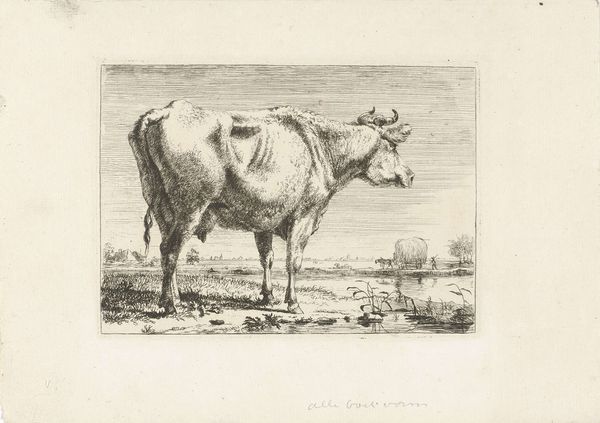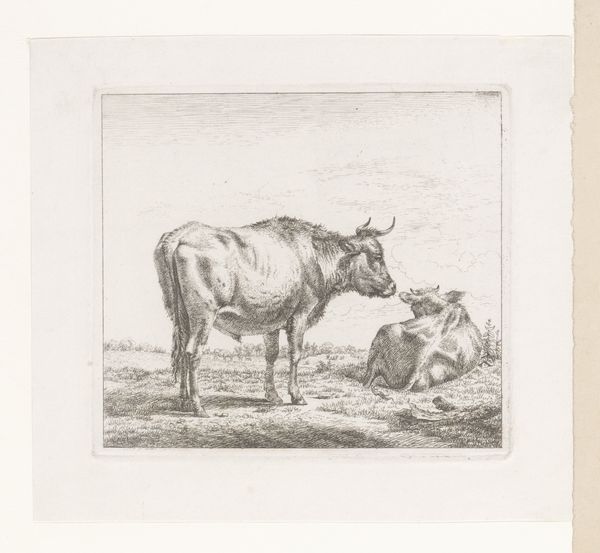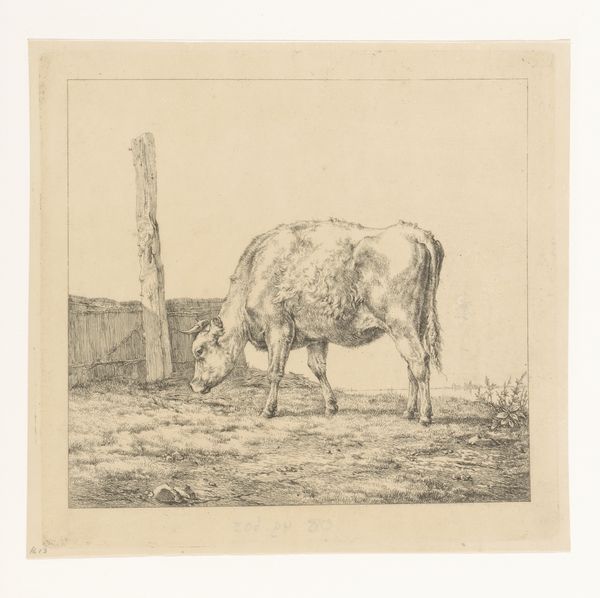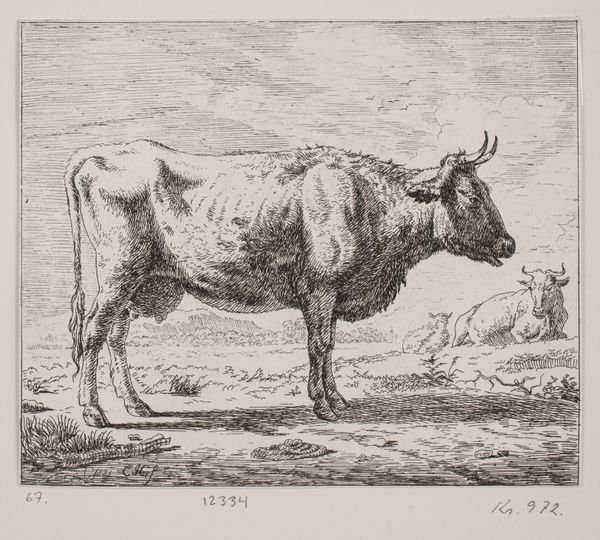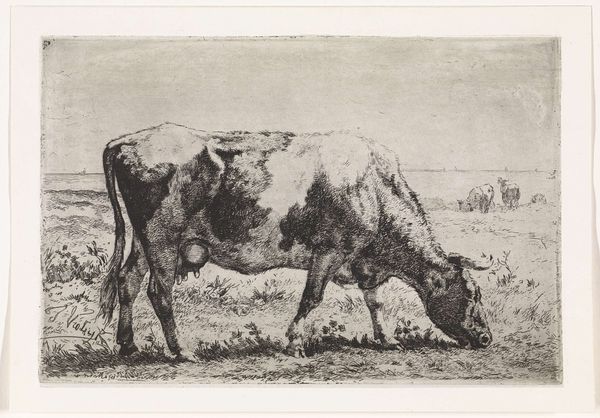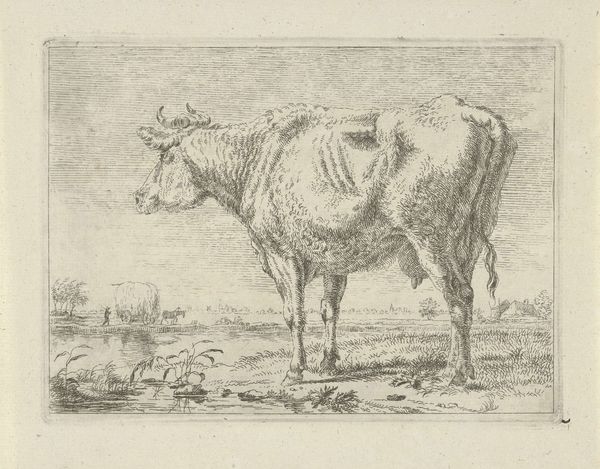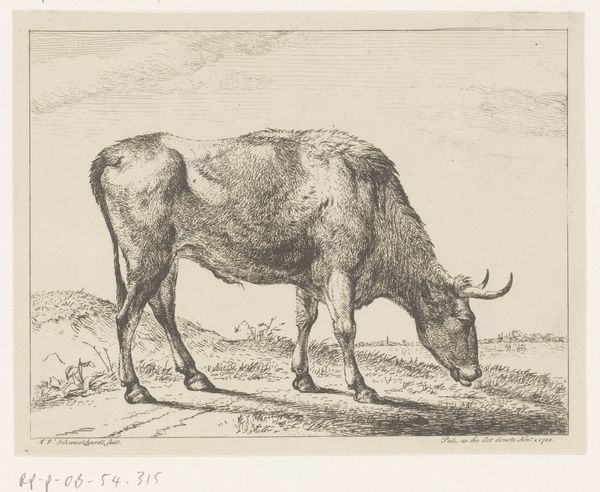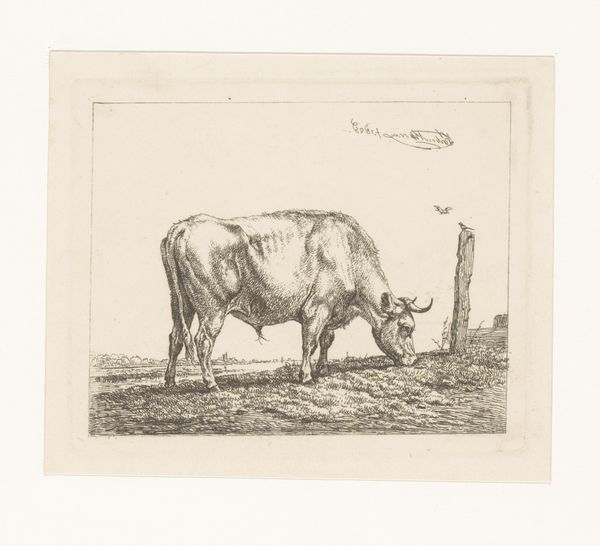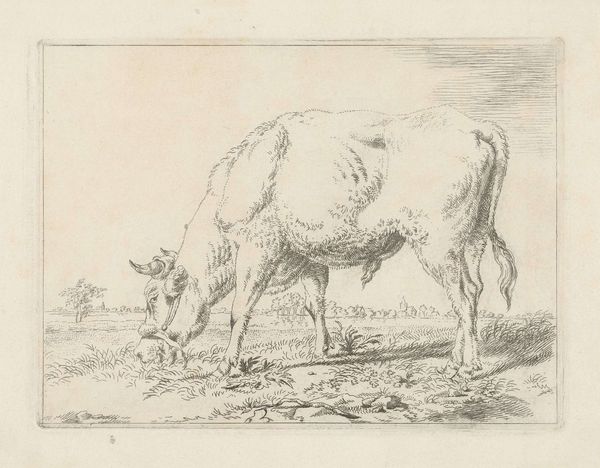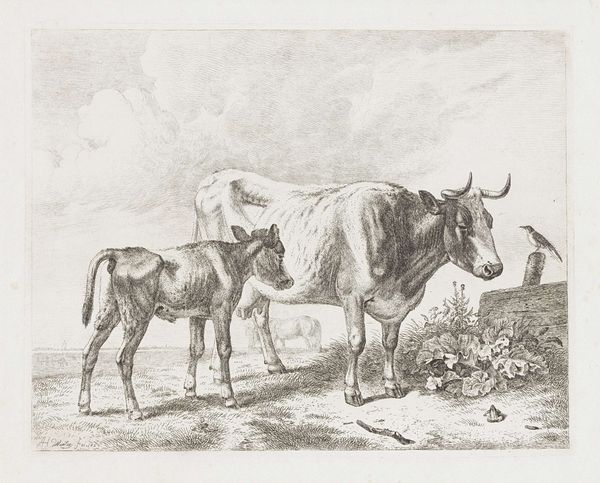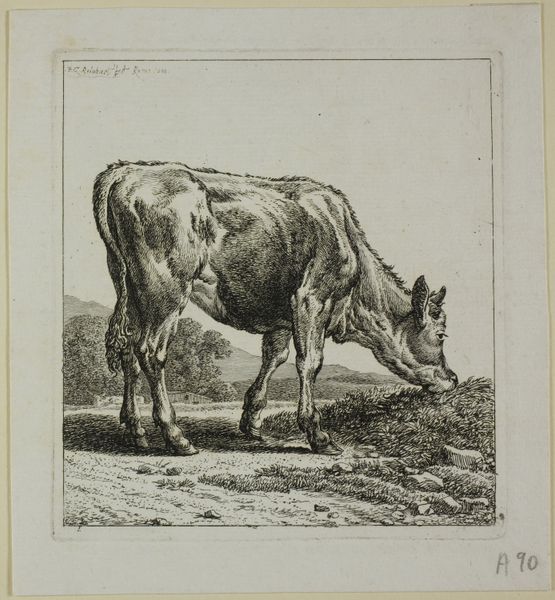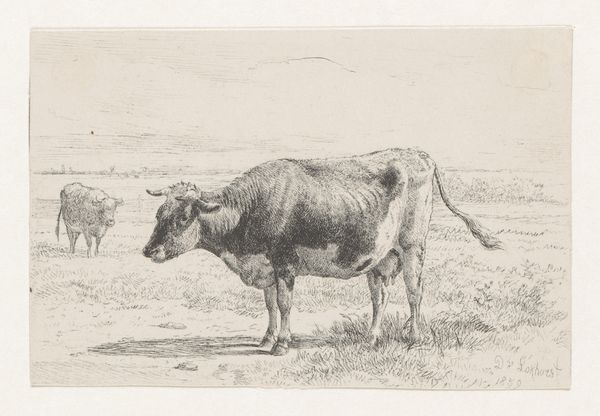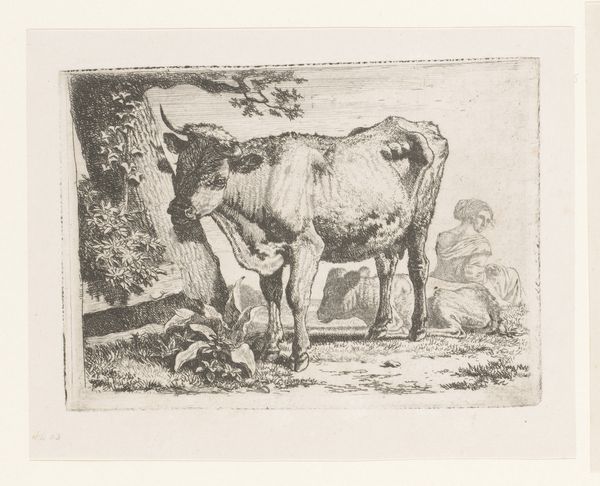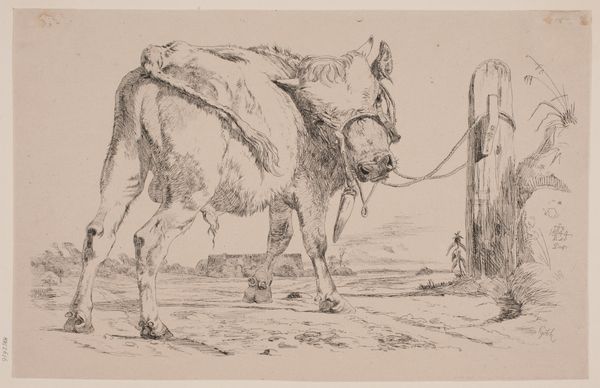
drawing, print, engraving
#
drawing
# print
#
landscape
#
genre-painting
#
engraving
#
realism
Dimensions: height 130 mm, width 180 mm
Copyright: Rijks Museum: Open Domain
Curator: This is Pieter Gerardus van Os' "Grazing Bull," a print and drawing made around 1798. It's currently held in the Rijksmuseum. Editor: Immediately, the simplicity strikes me. The single bull dominating the composition evokes a kind of quiet pastoral scene. Curator: The image is interesting because it exemplifies the trend of Dutch artists during that period focusing on rural life, idealizing it somewhat, while cities grew. What sort of statement could we make about production with it, you think? Editor: I think we have a beautiful example of realism. This is a depiction of the natural world, but let's consider the physical labor involved in creating the engraving, translating observation into meticulously crafted lines. How many copies of this piece were made, how accessible would the print have been to ordinary people? Curator: Engravings were a relatively accessible form of art. These prints circulated widely and shaped popular notions of the Dutch countryside. But also consider Van Os himself, part of an artistic lineage: his father was also an artist, specializing in still lifes. His training shaped the work, which speaks to his cultural capital. Editor: Good point, so this is part of the wider consumption and art market. In this case the image seems also part of the wider phenomenon in the eighteenth century and later of urban populations’ romanticization of the countryside and simple farm life. Do you feel that Van Os achieved that idealized portrayal? Curator: I do. He has an interesting position, showing an aspect of agrarian life without confronting some realities. But look closely, and one observes that it does have some realist features. The veins standing out in the cow and some minor anatomical flaws. Editor: So even through some flaws, we have a compelling visual document capturing not only the animal itself but also the values and cultural context of its time. It prompts thoughts on art, labor, social status and class distinctions. Curator: It's a work with layers, connecting the creation and circulation of images with the wider forces that shaped Dutch society and the relationship between city and country.
Comments
No comments
Be the first to comment and join the conversation on the ultimate creative platform.
